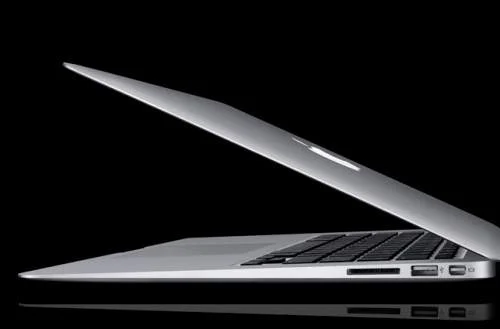A prominent Silicon Valley analyst has refuted claims that Apple is poised to ditch x86 chips in favor of RISC-based processors for its MacBook lineup.
“Rumors aside, Apple will not switch their laptops to ARM any time soon. In the past, Apple successfully made two platform transitions, when their hardware partners had no performance competitive designs,” Real World Tech analyst David Kanter told TG Daily in an e-mailed statement.

“However, x86 has no problem keeping up with the market in terms of performance or efficiency, and there are too many technical and business challenges for an ARM migration.”
According to Kanter, ARM microproccesors are primarily designed for lower performance devices. As such, they are unlikely to match the raw horsepower of x86 architecture over the next few years.
In addition, high-end ARM designs may not boast a “clear power efficiency advantage” over x86, while any x86 emulation on RISC-based processors will reduce performance and efficiency even further.
“Intel and AMD already do an excellent job competing to meet Apple’s needs. It would be very expensive for Apple to design their own microprocessors – perhaps in the range of $200M or more. The entire notion is incredibly risky, given Apple’s lack of experience with end-to-end chip design, especially for high performance microprocessors and graphics,” Kanter explained.
“As such, it would be far more sensible and typical of Apple to sit back and encourage other companies to take the risk in the hope of securing Apple’s potential business. Nvidia would be a prime candidate here, but most of the technical and business problems are equally applicable to third parties.”
Kanter also opined that the advantages of an ARM notebook were “not particularly” impressive.
“There will be no performance improvement, and power efficiency is likely to be similar to x86. Even if Apple switched all their notebooks to ARM, they would still need x86 for desktops and servers; the software ecosystem would continue to span both instruction sets.
“[Yes], there would be some advantages to complete vertical integration for Apple, but it is hard to see any game changing differences. The cost savings are fairly small as well. More importantly, Apple’s computer line is in pretty good shape today, and taking such a big risk for relatively little gain makes no sense.”
Nevertheless, Kanter acknowledged that Cupertino may be planning to design a hybrid x86-ARM system at some point in the future.
“There are a number of ways putting ARM near a computer could be quite interesting and valuable. For example, Apple could include an ARM core in future notebooks for ‘instant-on’ web browsing while the computer is booting – something done in certain Dell and HP models. An extension of that idea would be an update to OS X with an iOS emulator and maybe a co-processor for future hardware.
“Unifying Apple’s three major platforms (computers, tablets and phones) would make it far easier for developers to target Apple platforms. In some ways, this might be the most sensible, since expanding the iOS installed base would help Apple create a more attractive market for developers compared to Android and could facilitate tying the iPhone to other Mac products.”
Finally, Kanter noted that ARM could evolve into a “viable” notebook option over the long-term.
“Apple has invested a lot of time and effort in portability (e.g. LLVM, OpenCL, OpenGL), so it is clearly possible. Apple has few attachments to x86 and would not hesitate to shift to a better alternative. However, there are no ARM designs that will meet Apple’s needs for performance and efficiency in the next two or three years.
“Even if there was, it is hard to see how such a design would be substantially better than AMD’s offerings. Over 5-10 years though, many of the technical and business hurdles may change. The ARM ecosystem is moving forward at a rapid pace, and Apple is watching carefully,” he added.






